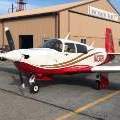VFR into VMC
-
Members Online
- newtomooney
- TangoTango
- hypertech
- crazydave
- AndreiC
- Rmnpilot
- Parker_Woodruff
- TCC
- Bob B
- KSMooniac
- eman1200
- pirate
- Skyland
- Jason
- stevesm20b
- gmendoza
- 47U
- tcal780
- TreetopMooney
- Matthew P
- jeremyc209
- BradKratz
- 1980Mooney
- ProtoFly
- Ethan
- thomas1142
- mluvara
- Vance Harral
- Fly Boomer
- Ibra
- Freddb34
- MB65E
- Greg Ellis
- LOCOLJ
- exM20K
- Bradmas
- donkaye, MCFI
- Mooneymite
- BrentS
- Rick Junkin
- Bytes


Recommended Posts